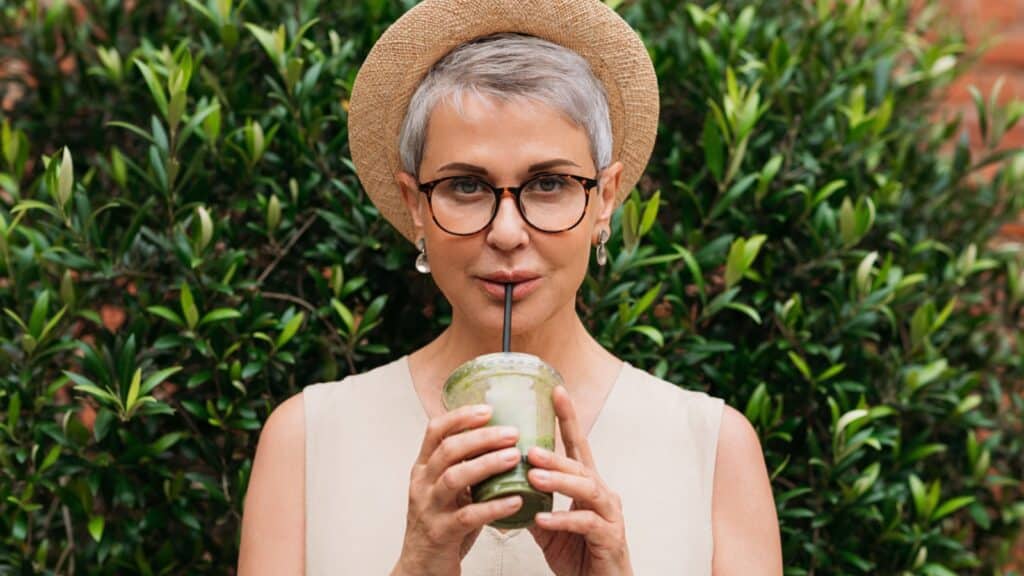Matcha has become such a part of Gen Z’s everyday life that you’d be forgiven for forgetting that it used to be a specialty drink. It’s in practically everything nowadays, whether it’s iced lattes or protein mixes. Farmers in Japan have had to scale up tencha (the leaves used for matcha) production by nearly three times in the last decade just to keep up. So why is Gen Z so obsessed with this drink? Let’s find out.
Matcha’s jump with younger drinkers
Matcha is no longer a niche drink. Industry projections have put the global matcha market at approaching 5 billion US dollars within the next few years. Farming data from Japan also supports this rising interest. Recently, tencha output reached more than 5,300 tons. It’s a huge increase from the numbers that farms were producing about ten years ago.
But by far the largest consumers are younger people. Many of them order matcha instead of their usual espresso drinks, especially iced ones. Café sales across the UK, for example, showed that the number of matcha drinks doubled during a single summer. The growth primarily came from teens and twenty-somethings picking it up as a go-to drink. But why?
Health claims that fit Gen Z’s wellness focus
One of the main reasons Gen Z likes matcha is because of its long list of natural compounds. They care about these details. The powder has all sorts of catechins like EGCG, while the tea leaves contain L-theanine. These chemicals have been proven to help with attention levels and tiredness during workouts, as well as stress response.
It’s quite important for Gen Z. They care a lot about how their food choices affect their feelings day to day, so a drink with a steady amount of caffeine and a recognizable ingredient list fits neatly into that mindset.
Social media turns matcha into a daily visual
The fact that matcha is all over TikTok and Instagram also helps. Hashtags about matcha drinks are all over millions of posts online, including videos of quick latte pours and long café reviews, as well as bright green dessert shots. The look of matcha works well on camera. As a result, it keeps spreading.
Young people are already very likely to change their habits based on what they see online. This includes what they eat and drink. Yes, companies know this and push their own matcha content, but it’s usually the homemade videos that do most of the work. A trend that’s both pretty and easy to copy often sticks around.
Matcha as part of Gen Z identity and trend culture
Matcha has also become a part of Gen Z’s style and personality. It works as an accessory people carry around in photos or mention in their day-in-the-life posts, and matcha has become a recognizable “type” in certain online spaces.
Like most generations, Gen Z uses brands to express who they are. Matcha stuck with them as soon as it became part of that space.
Swapping coffee and soda for “functional” drinks
Many Gen Zers have also been moving away from sugary sodas and towards drinks with a clearer “purpose” of sorts. This includes kombucha, kefir, and, of course, matcha. Retail data from 2025 found that the sales of functional drinks increased by more than 50%. Matcha sits squarely in that category.
Cafés also make ordering relatively simple. You can get an iced matcha with oat milk, syrup, or no syrup, blended or layered, anything that you want. It has the punch of caffeine without the buzz of an espresso shot. Plenty of young people prefer that smoother feel.
Values around sustainability and origin
A lot of younger consumers care a lot about where their food comes from. Sure, maybe not down to the exact farm, but they would like to at least know the region and the process of how it got there. Matcha gives them that. It usually only grows in specific areas in Japan, such as Kyoto and Uji. Growing it involves some rather unique shade-cover techniques.
Research on green buying behavior has found that younger shoppers put more importance on environmental factors than older groups. The generation’s interest in sustainability and authenticity is likely linked to the rise in specialty teas.
Matcha everywhere
There’s also the fact that matcha is no longer a mere drink. Powdered green tea works well as a natural color and flavor booster in sweets, as well as in cakes, cookies, mochi, chocolates, energy bites, ice creams, and all sorts of bakery items. Matcha snacks and desserts have been growing for years in countries outside Japan.
Matcha also exists in products you wouldn’t expect, like skincare and supplements. The powder extracts are rich in the same antioxidant compounds that exist in food research.

